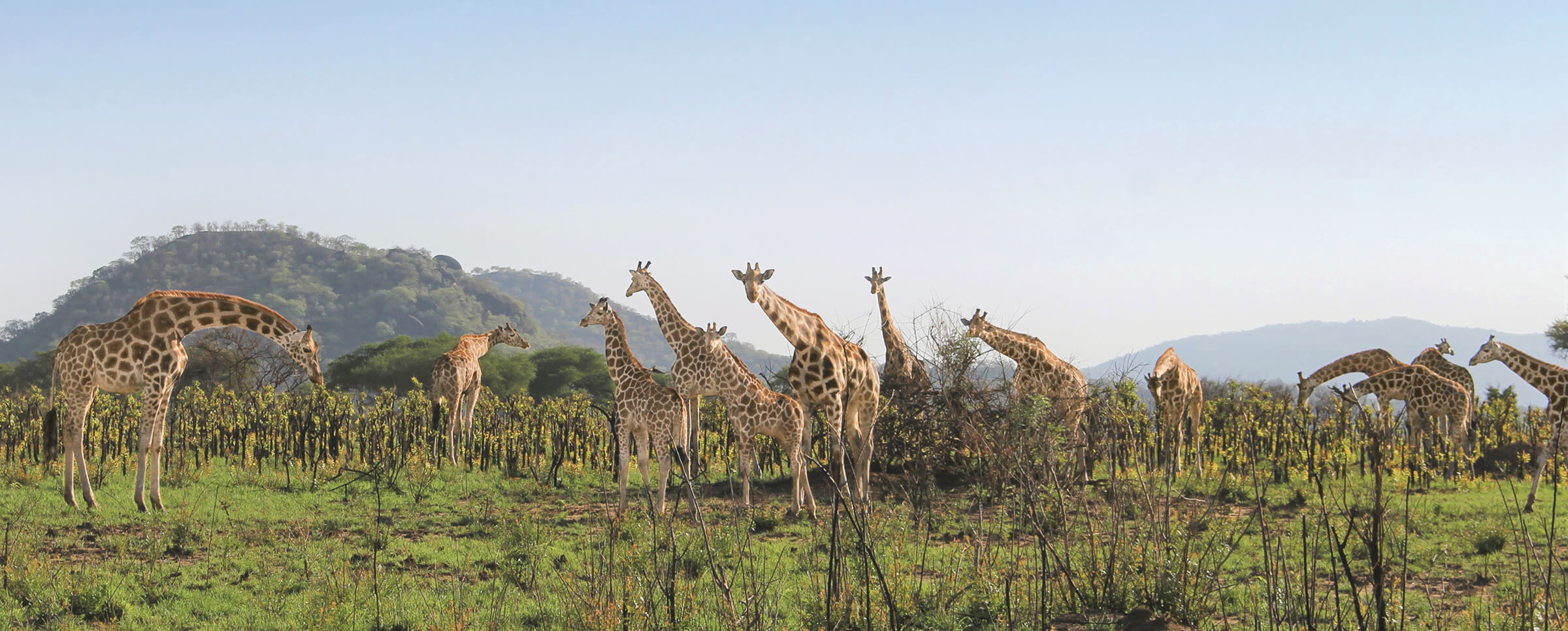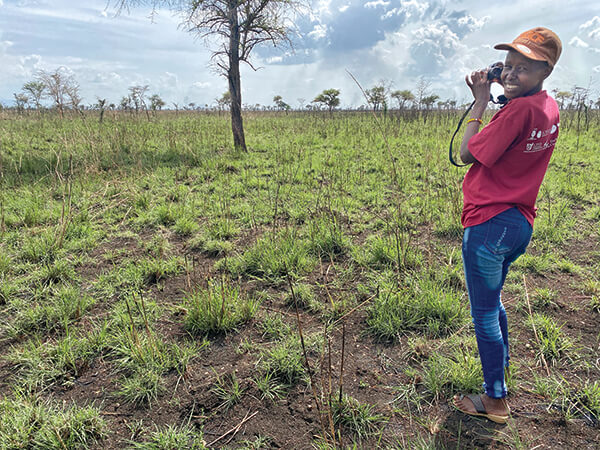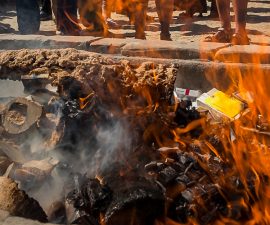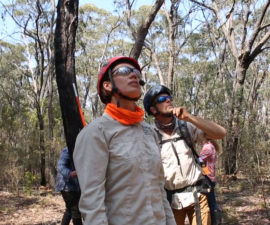Three giraffe researchers share their accounts of working under unusual circumstances
BY Jenna Stacy-Dawes and Ruth Lekupanae and Symon Masiaine
Jenna Looks Ahead to a Project in Uganda
Working alongside the dedicated conservationists of the giraffe research team in Kenya is one of the best parts of my job. I was ecstatic when I found out that Ruth Lekupanae, one of the team members, and I would be traveling to Uganda to assist the Giraffe Conservation Foundation (GCF) with surveys of critically endangered Nubian giraffes—thanks to the continued collaborative partnership between San Diego Zoo Global and GCF, and the generosity of Save Giraffes Now. With a population of only 3,000 individuals left, Nubian giraffes are in desperate need of increased conservation efforts and protection throughout their range, and we were excited to join the effort.
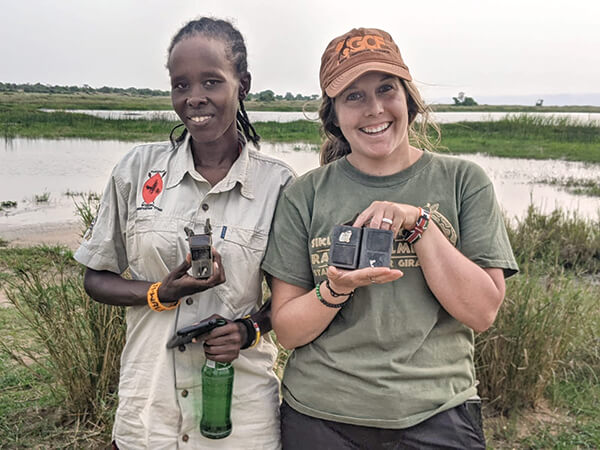
CANDID CAMERA
Ruth and Jenna in the field gathering cassettes from the field cameras. (Photo by: Philip Carter)
Ruth Lekupanae has been working on the Kenya giraffe conservation program since its inception in 2016, and she is currently the only female member of the Twiga Walinzi, which means “Giraffe Guards” in Swahili. Starting off as a ranger, her dedication to conservation and her passion for wildlife and her community led her to become one of the project’s most important research assistants. To be able to take her on her first plane ride and have her join me in Uganda would be an amazing and unforgettable experience for both of us. I was looking forward to getting started on the surveys at Uganda’s Pian Upe Game Reserve.
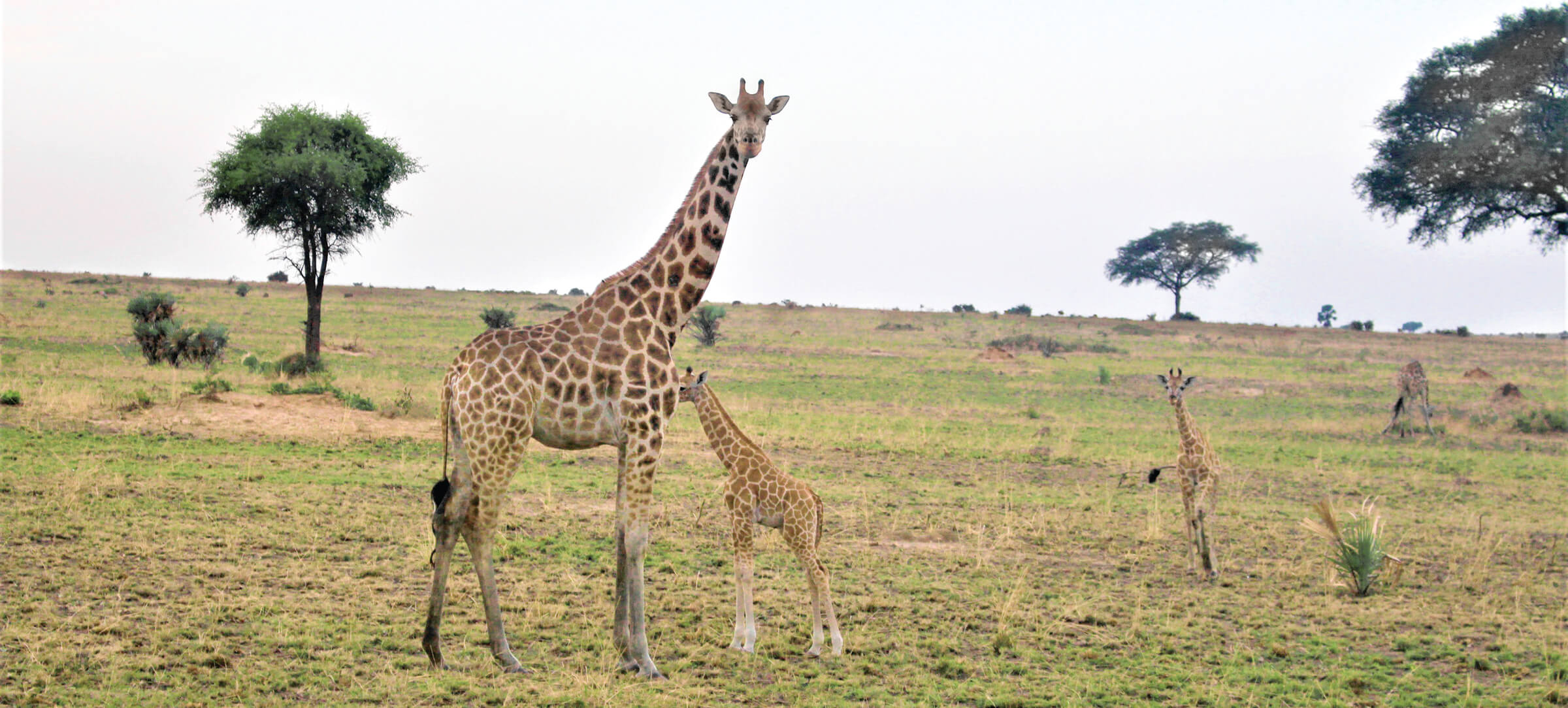
Ruth Shares Her Research Experiences
I am from Wamba, a town on the western side of the Matthews Mountain Range in Namunyak Community Conservancy. Having grown up in northern Kenya, and having only traveled to Nairobi once before, I was excited for this opportunity. I was most excited to see how other places are protecting their giraffes and wildlife—but also to go on a plane!
Our first stop in Uganda was Pian Upe Game Reserve, to monitor 14 Nubian giraffes that had been moved to the reserve in October 2019 from Murchison Falls National Park. It was shocking to learn that giraffes occurred in this area as late as the 1990s, but had been completely eliminated from the area by over hunting. After a few hours of tracking, we were able to find three of the new giraffe residents. This was my first time seeing another subspecies of giraffe other than reticulated giraffes, and I was surprised to see they did not look all that much different, maybe just a bit lighter in color. It was so nice to see them acting content in their new home.
After visiting Pian Upe, the group traveled to Murchison Falls National Park, the former home of the 14 giraffes, where GCF has established a long-term monitoring and conservation program for Nubian giraffes. We saw large herds here, some groups containing 50 individuals. While it was encouraging to see so many giraffes, it was very sad to see many animals that were impacted by humans, primarily in the form of snare wounds. We have seen snares in Namunyak, but not enough that you can find animals with snare wounds.
Just as the Twiga Walinzi team does in Namunyak, we need to work with the communities in this area to tell people that the animals belong here, and it is our responsibility to protect them. We have really focused on working with our communities in Namunyak to reduce the poaching there. I think involving the communities in Uganda for conservation is very important and needed.
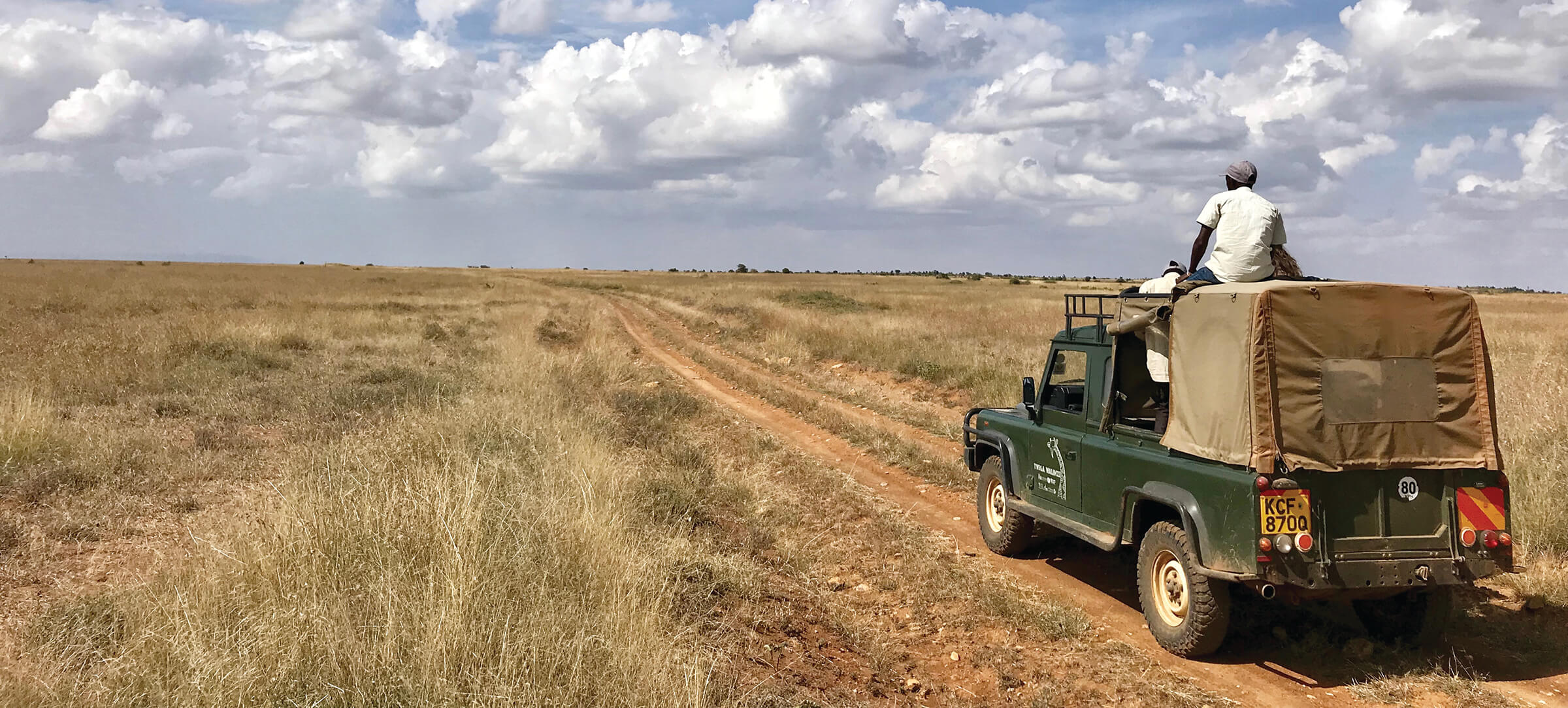
Unexpected Turn of Events
Doing conservation fieldwork is always full of unexpected challenges, and you need to be able to adjust plans at the drop of a hat. However, Ruth and I certainly didn’t foresee facing a challenge like a global pandemic. It hit while we were in the middle of our surveys, and our time in Uganda was cut short due to mounting concerns over COVID-19.
We were in a small camp in Pian Upe when the camp manager mentioned the US might be imposing travel restrictions. Worried about getting ourselves home, we scrambled to find Wi-Fi and cell service at the top of a hill. Trying to quickly organize travel for two people back from a remote game reserve amid growing pandemic concerns and closing airports was not something I thought I would ever add to my list of skills!
On the day we managed to organize flights out of Entebbe in Uganda, Kenya shut its borders to non-Kenyan citizens, meaning I would have to wave goodbye to Ruth from the customs checkpoint in Nairobi. I had to cross my fingers that my flights would not be cancelled, hope that my allergies would not act up while I was going through customs (sneezing and coughing would not be good!), and hope that I had enough wipes and hand sanitizer to get me home.
By the time I arrived back in San Diego, I had taken 2 taxis and 4 planes, and had spent over 24 hours in layovers at various airports alone—but I was home. Ruth got home safely as well. On the one hand, we were both glad; on the other, we did have moments of wondering if it might not have been better to be quarantining in the open savanna with the giraffes!
Symon recounts his Concerns for Conservation and Communities
I am the conservation coordinator for the Twiga Walinzi team in northern Kenya. Growing up as a pastoralist, I have always had a passion to help in the conservation of wildlife and advocate for the coexistence of wildlife and livestock. The thought of being able to help animals was, and is, a dream of mine. I want to educate people about how we can tackle the threats that animals face. I am aware of the challenges between humans and wildlife, and without conservation, ecosystems can fall apart, causing the loss of both.
The global pandemic has inflicted a new blow to the protection of our natural resources. The threat of COVID-19 has required people who work in wildlife conservation to go home and be with their families, leaving the conservation work behind. Thankfully for our teams, the majority of the COVID-19 cases seem to be restricted to Nairobi, Mombasa, Kwale, and Kilifi—not too close to us at this time. However, to limit the spread of the virus throughout Kenya and in conservation-related areas, authorities have included the closure of national parks as a social distancing measure—which indirectly puts wild animals, especially elephants and rhinos, at the mercy of poachers, who target them for their tusks or horns.
Additionally, closing the national parks has temporarily halted ecotourism, from which the funds needed to protect the parks are derived. Not only does this suspend a major form of revenue for our country, but many of the wildlife guardians are unable to go to work and receive an income as well. As part of its integrated conservation strategy, the Kenya Wildlife Service has involved local people in wildlife protection by providing jobs as trackers and eco-guards in the national parks, but now those jobs are unavailable due to the closures and lack of revenue.
People are apprehensive about the spread of the virus into the rural areas. Some pastoralists are worried that the virus might affect their livestock. A primary problem in our communities, besides the lack of employment, is access to basic commodities in our villages and the limited transportation of goods across the counties, including food staples and, important now, hand sanitizer. Additionally, as most of us continue to keep livestock as a means of income, there is now, as a result of the pandemic, a problem of where to sell livestock so that we are able to buy the required goods.
While we are lucky that a high number of COVID-19 cases have not yet come to northern Kenya, the indirect threats of the virus are worrying. The Twiga Walinzi team has been at home and taking precautions. While we feel good to be with our families, we are deeply saddened that we are not seeing our friends the giraffes. I feel I have giraffes as part of me and I am part of them. Our team is calling officials daily, asking for any information on COVID-19 and the state of the nation, so they can go back and be with giraffes, to study them, understand them, and most importantly, protect them.
We really hope that this pandemic comes to an end soon, and people can go back to their normal lives, as we believe the giraffes need to see us—and we also need to see them.

